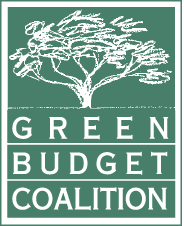Canada has committed to achieving a zero-emissions electricity system by 2035. Analyses by the IEA and UNFCCC have determined that this is required to be in-line with the goal of the Paris Agreement. It is a foundational climate solution that will unlock emissions reductions and affordable energy for other sectors. To reach this goal, the draft Clean Electricity Regulations must be strengthened and finalized without delay and paired with strategic investments in clean electricity infrastructure.
Budget 2023 saw unprecedented support for clean electricity infrastructure. This down-payment was crucial for kick-starting a transformation of Canada’s electricity system, but more funding is needed to insure affordable, secure, zero-emissions electricity for everyone in Canada by 2035 through significant investment in the generation, transmission and demand side of electricity. Strong collaboration between all levels of government, including Indigenous governments, utilities and system operators will be required. As electricity investments require years to move from planning to commissioning, funding must be made available now, with clear signals for future federal support. Only with bold and strategic investments and regulatory certainty will we be able to successfully and equitably decarbonize the electricity sector across Canada. The untapped potential in distributed energy resources is significant and distributed energy resources can create resilience, manage the cost of electricity, reduce energy poverty, provide local jobs and economic development, help save grid infrastructure costs, and unlock new community capital from citizens eager to participate in climate action.
Low-income and vulnerable people — including remote and Indigenous communities — must have affordable and equitable energy access as Canada transitions to a clean electricity grid. Siting of renewable installations on traditional Indigenous territories, and reducing reliance on diesel in Indigenous and remote communities, requires special care and attention. With targeted renewable energy funds, there is significant opportunity to advance environmental and social equity while reducing emissions. The federal government can play a vital role in supporting clean electricity generation through the following investments in Budget 2024:
Total Recommended Investment: $25.97 billion over five years
Federal support for grid upgrades
1. Interprovincial transmission: $20 billion over five years for strategic interregional transmission projects to support clean electricity infrastructure deployment, system reliability, and to top up the existing Investment Tax Credit (ITC). As developing interties between key provinces has been difficult in the landscape of Canada’s current electricity system, the Green Budget Coalition recommends that these funds be made available in the form of a 50% ITC to develop key interprovincial interties, bringing demonstrable benefits to both ends of these new connections. Additionally, the ITC should be conditional on securing the support of Indigenous communities whose traditional territory or land right/ claims apply to the project in question. [NRCan]
2. Strategic support for Indigenous-led and community-led generation: $4.8 billion over five years for investment in clean electricity projects and programs targeted to benefit Indigenous, low-income, and vulnerable communities. This could include, but not be limited to, renewables, energy storage, district energy, and grid reliability. These federal investments should take the form of grants, not loans, wherever possible. [NRCan]
3. Allocate up to an additional $800 million to programs specifically aimed at building Indigenous leadership and partnerships for clean energy deployment in remote Indigenous communities. Funding programs should be flexible and support Indigenous- led projects that reduce diesel consumption in homes and buildings through deep energy retrofits, and through renewable heat and power generation. [Lead: NRCan, involved: CIRNAC, ISC, INFC]
4. $15 million over five years to enable specific Smart Renewables and Electrification Pathways (SREP) program and Canada Infrastructure Bank program streams to support project development in equity-deserving communities such as communities affected by environmental injustice or lower income communities to build their capacity and increase their access to the programs that would deliver social, environmental, and economic benefits. [NRCan, CIB]
The Green Budget Coalition is also recommending targeted funding for low-income households to access affordable clean energy. Please see A Renovation wave for climate resilient homes and affordable home energy, earlier in this document.
Collaboration, and best practices in clean electricity governance, market design, planning and deployment
5. $200 million over five years of additional funding be made available to provinces
who commit to making systematic improvements to their full electricity system. We applaud the requirement placed on access to the Clean Electricity ITC in Budget 2023 that federal funding be used to lower electricity bills and a commitment to achieving a net- zero electricity sector by 2035 in each province and territory. In developing the delivery mechanisms for the Clean Electricity ITC, how funding under the Clean Electricity Focus be delivered by the CIB and through the SREP, in addition to funding streams added in Budget 2024 we recommend that funding delivered be commensurate to provinces committing to making systematic improvements to their electricity systems. The federal government can facilitate follow through by making some of this funding available to support commissioning independent pathways assessments for decarbonisation of provincial electricity systems, consulting on and producing provincial energy plans, and improving the capacity and resources for regulators to mandate sustainability within utility regulations. [NRCan]
6. $150 million over five years to enhance strategic regional cooperation and provide additional research and planning capacity to support projects and analyses of interregional transmission to ensure reliability, efficiency and affordability for the grid of the future. This could include, but not be limited to, additional modeling, planning, procurement and market integration analysis. [NRCan]
7. $5 million to fund a consultative process with provinces, territories, municipalities, utilities, industry, NGOs, other regional partners and interested community members focused on least-cost pathways toward 100% clean electricity by 2035. [NRCan]

